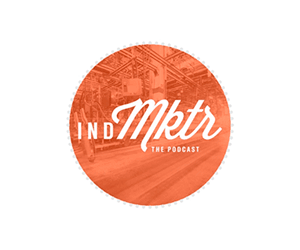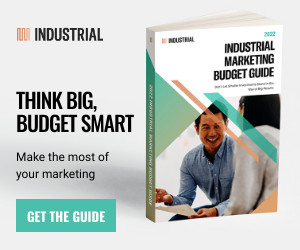Sometimes being an industrial marketer can feel like you are a stranger in a strange land. Very few people speak your language and a translator is hard to come by. This article is meant to help you become your own translator with six key tenants you should abide by if you want to speak effectively to the members of your executive staff about your marketing efforts, helping you secure that elusive C-suite buy-in.
Communicating the essence of what is happening at each phase of the industrial marketing process is crucial to fostering C-suite buy in, “aha!” moments, and an overall understanding of why what you do is important to the success of your company.
Tenant No. 1 – Positioning
The very first goal of a marketing campaign is to make sure that your company is well positioned in your industry landscape.
What does that mean? Well, it starts with understanding and defining who you are as a company.
- What makes you different from your competitors?
- How do you deliver value to your customers in a way that sets you apart?
- Where does your company see itself going in five years? In ten years?
Understanding who you are and where you want to go allows you to position yourself to achieve those goals. If you don’t have strong positioning, it is hard to be competitive in marketing, in sales . . . in business.
Tenant No. 2 – Targeting
If being well positioned points to a location on a map, then targeting is your GPS. Once you know who you are and where you are going, targeting gives you the steps to take you there.
Many people in the C-suite will respond to conversations about high-level brand strategy and creative strategy (and those things are important) but at the end of the day, knowing your target audience is where the money is.
Focusing on a well-defined target limits wasted exposure on any media campaign. It also helps to determine where you spend your time and your money — and how you can most effectively utilize those resources.
Tenant No. 3 – Proactivity
So, you have positioned yourself as a company. You know where you are headed, and the customer that you want to be a part of your journey. Now is the time to be proactive.
Take all the information you have pulled together and build a formal — meaning actionable and trackable — marketing plan. This proactive step leads to the development of a marketing budget and goals that can be presented for C-suite buy-in.
Being proactive about creating an action plan can make all the difference between a marketing department that is reactively putting out fires and a marketing team that is moving toward an overall company goal backed by C-suite buy-in.
Tenant No. 4 – Communication
Once you have a proactive marketing plan in place, you are in a good position to communicate about your company.
Communication is the primary way to become discoverable. Being discoverable is the key to generating new business leads. Having walked through the process of the first three tenants, you will have a strong foundation for creating engaging and useful content, placed in front of the right audience, at the right time, in order to drive them toward your call to action.
Delivering this content consistently enough to make a memorable impact is especially important today. Some digital marketing experts estimate that an individual can see up to 4,000 ads in a day. Creative, helpful content can cut through that clutter and launch an inquiry, a request for quote, and, potentially, a new client. The importance of maintaining a consistent and quality content cadence cannot be underestimated.
Tenant No. 5 – Responsiveness
After you’ve started executing against your marketing plan, there has to be a system in place to respond to the leads that it generates.
This sounds obvious, but a Harvard Business Review study looked at the number of leads that go without response. The study showed that number to be over 20%. Additionally, leads that were responded to within an hour had a 60% greater chance of contact with a decision maker than those that were responded to one hour later.
In today’s immediate-gratification, Internet-centric age, response time is critical. This includes social media responsiveness, as well as phone and email responsiveness. If you are spending time and money on marketing, not managing lead response time is literally leaving money on the table. Make sure to underscore this point when you petition for C-suite buy-in!
Moreover, the importance of being first to a quality lead has led industrial marketers to consider the use of intent-based marketing tools that predict a prospect’s likelihood of buying in the near term. Typically, intent can be identified using technology that measures behaviors users exhibit during their interactions with your company online. In the near future, then, the tenant of responsiveness may very well give way to a new tenant: predictiveness.
Tenant No. 6 – Transparency
Tenant six is the tenant that speaks the most directly to showing the value of industrial marketing to your C-suite: transparency.
Above all, you have to be able to define, measure, and communicate your industrial marketing success to get C-suite buy-in. Setting very detailed goals for how many leads should be generated from your campaign, for example, allows everyone on your team, including the C-suite, to see the benefit of the marketing spend.
You also have to understand what the C-suite cares most about. At the end of the day, it is going to be about revenue and profit, which can be most directly attributed to leads. Effective, transparent communication with the C-suite will very often center around the number of leads needed for a certain number of sales, which yield a certain amount of revenue and profit.
Additionally, using the numerous tools at your disposal to report results with transparency will also allow you to pivot if an ad or campaign isn’t working — or help you invest more in what is working. Showing agility to your executive team can also help you get continued C-suite buy-in for future marketing campaigns.
Securing Your C-Suite Buy-in
That’s it! Focusing on these six tenants will give you a bulletproof way to communicate the value of your industrial marketing efforts and secure C-suite buy-in.
If you are already doing all these things — that’s great! Keep up the good work!
But if you’d like to know more about how to put these tenants to work for you, please reach out to me on LinkedIn.




